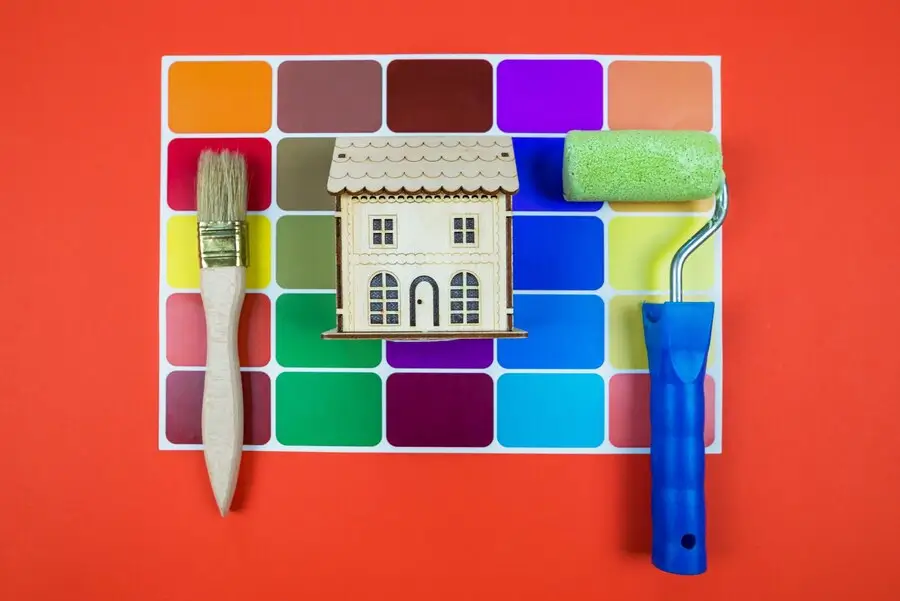Colors have always been an essential part of human experience. From early cave paintings to the vibrant cityscapes of today, they evoke emotions, convey messages, and define our cultural narratives. Colors shape our mood, behavior, and how we perceive the world around us.
Colors are not just about aesthetics; they form an important bridge between cultural identity and design, reflecting the traditions, emotions, and values of the people.
Colors and Cultural Identity
Colors can hold different meanings across various cultures, symbolizing values, emotions, and beliefs that are central to a society’s way of life. By understanding these symbolic meanings, we can see how deeply intertwined colors are with cultural identity.
Red for Prosperity and Celebration in Chinese Culture
Red is a color of prosperity, joy, and celebration in Chinese culture. Traditionally, it symbolizes good fortune and happiness, making it an integral color in Chinese festivities and rituals. During the Lunar New Year, red decorations are ubiquitous—from lanterns to envelopes filled with money—bringing wishes of prosperity for the coming year. Red is also a popular color for Chinese home decor, as it evokes warmth and brings a sense of positivity into the space.
The significance of red doesn’t end with home interiors; it spills into public spaces like Chinese restaurants, where red is used liberally to convey festivity and prosperity. From walls painted in vibrant shades of red to the choice of restaurant furniture, such as red chairs and accents, the color helps create a celebratory ambiance that invites diners to feel connected with cultural traditions.
Earth Tones in Indigenous Cultures
Indigenous cultures often draw inspiration from their close connection with nature, reflected through the use of earth tones like browns, greens, and muted reds.
In Indigenous home design, earth tones are common, used to evoke a sense of grounding and balance. Whether through hand-crafted items or raw materials like wood, clay, and stone, these colors create spaces that feel harmonious and connected to the earth. Earthy tones are not just about decor—they express a philosophy of life that is based on respect, sustainability, and harmony.
Bright and Warm Colors in Latin American Culture
In contrast, Latin American cultures are characterized by their love of vibrant, warm colors—yellows, blues, oranges, and pinks. These colors embody the spirit of celebration, community, and warmth that is central to life in Latin America. They are often seen in the facades of homes, bright textiles, and festive decorations that mark local festivals and events.
Inside Latin American homes, colors are used to create a lively atmosphere. Bright yellows and blues are commonly used to paint walls, while vibrant textiles and pottery add splashes of color. These warm hues are not just for visual impact; they represent a sense of openness, hospitality, and joy that defines the culture.
Cultural Influence on Home Design
Cultural heritage plays a significant role in shaping home design—not only in the choice of colors but also in the materials, layout, and overall aesthetic. This influence can be seen in both traditional and modern home settings, where cultural values find expression in new ways.
Traditional vs. Modern Interpretations
While traditional colors hold cultural significance, their use in modern home design has evolved. Today, designers often seek a fusion of traditional and contemporary elements, combining cultural colors with minimalist design for a unique blend of old and new. For instance, a traditionally red Chinese living room might now include softer reds paired with neutral tones, balancing cultural symbolism with modern tastes.
This fusion can also be seen in homes where Indigenous elements are incorporated into sleek modern designs. Earthy colors, such as rich browns and greens, can be used alongside modern materials like glass and steel, creating a space that respects cultural roots while embracing contemporary style.
Psychological Effects of Colors in Homes
The cultural meanings behind colors also influence how they affect our psychology within living spaces. Different cultures associate specific colors with different feelings—for instance, blue is often seen as a calming color in Western cultures, representing tranquility and stability. In contrast, red may be used in Chinese homes to bring energy and positivity.
The use of culturally significant colors in home design thus goes beyond aesthetics—it’s about creating an emotional environment that aligns with cultural values and brings comfort.
Application of Cultural Color Schemes in Public Spaces
Colors play an equally vital role in public spaces, particularly in environments where atmosphere and experience matter, such as restaurants, cafes, and community centers.
Restaurant Furniture and Ambiance
In restaurants, the choice of colors for furniture and decor is essential for creating the right atmosphere. For instance, a Chinese restaurant may feature red furniture—including chairs and table accents—to evoke a sense of celebration and prosperity.
Similarly, Latin American-themed restaurants might use bright yellows, blues, and oranges in their decor to create a vibrant and festive ambiance, reflecting the warmth and energy of Latin American culture. Restaurant furniture plays a key role in these designs, helping to bring cultural themes to life in a way that feels authentic and welcoming.
Connecting Home and Dining Experiences
Color choices in public spaces like restaurants can also create a “home away from home” experience. By incorporating culturally significant colors, designers can evoke the warmth and familiarity of home, making these spaces more inviting.
For example, an Italian restaurant with warm earth tones and rustic decor might remind diners of traditional Italian homes, creating a comforting environment that enhances their dining experience.
Globalization and the Blending of Colors
Globalization has brought about a fascinating blending of cultural influences, leading to diverse and eclectic design choices in both homes and public spaces. This cross-cultural exchange of colors has created opportunities for new and innovative design, while also presenting challenges in maintaining cultural authenticity.
Fusion of Cultural Elements in Modern Design
In today’s globalized world, it’s common to see a fusion of cultural elements in home and restaurant design. A modern home might combine Scandinavian minimalist whites with vibrant Latin American textiles, creating a space that is both calming and lively. Similarly, restaurants may blend elements from multiple cultures—such as Japanese-inspired wooden decor with Indian bright colors—resulting in unique and visually captivating environments.
These eclectic designs reflect the diversity of modern identity, where people draw on multiple cultural influences to create spaces that feel personal and inclusive.
Challenges and Opportunities
While the blending of cultural colors offers exciting opportunities for innovation, it also presents challenges. One of the main challenges is maintaining cultural authenticity—ensuring that colors and elements are used respectfully and meaningfully, rather than as superficial decor.
At the same time, this blending provides opportunities for inclusivity, allowing designers to create spaces that celebrate cultural diversity.
Reflections on the Power of Colors
Colors are more than just a visual element—they are a powerful symbol of cultural identity, shaping our emotions and how we interact with the world around us. From traditional homes to modern public spaces like restaurants, culturally significant colors bring warmth, identity, and meaning to design.
Understanding and respecting the cultural meanings behind colors can enrich our living environments, creating spaces that foster comfort, connection, and belonging. Whether through the vibrant reds of Chinese culture, the earthy tones of Indigenous traditions, or the lively hues of Latin America, colors help us express who we are and connect us to our heritage. In a world that is increasingly interconnected, embracing the beauty of cultural diversity in design allows us to create spaces that celebrate tradition, creativity, and inclusivity—bringing us closer together, one color at a time.




